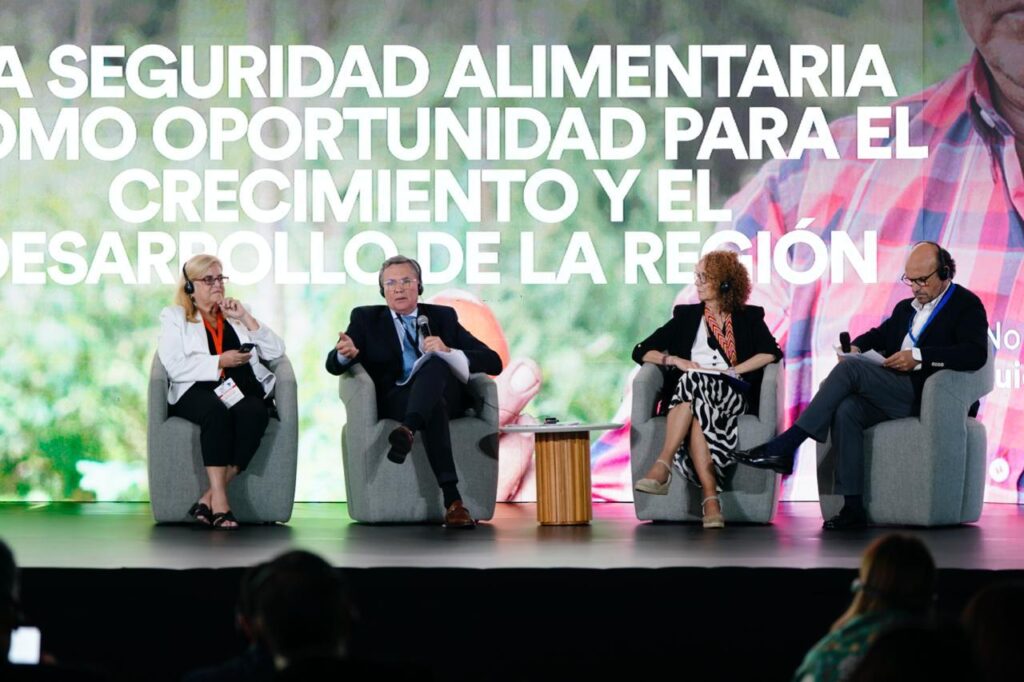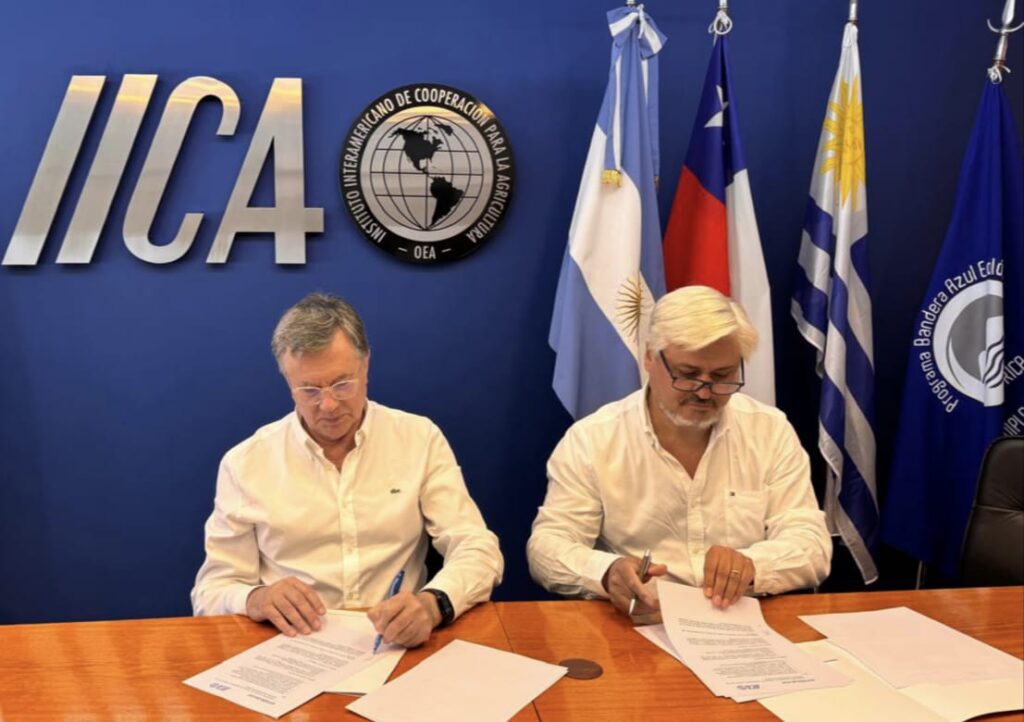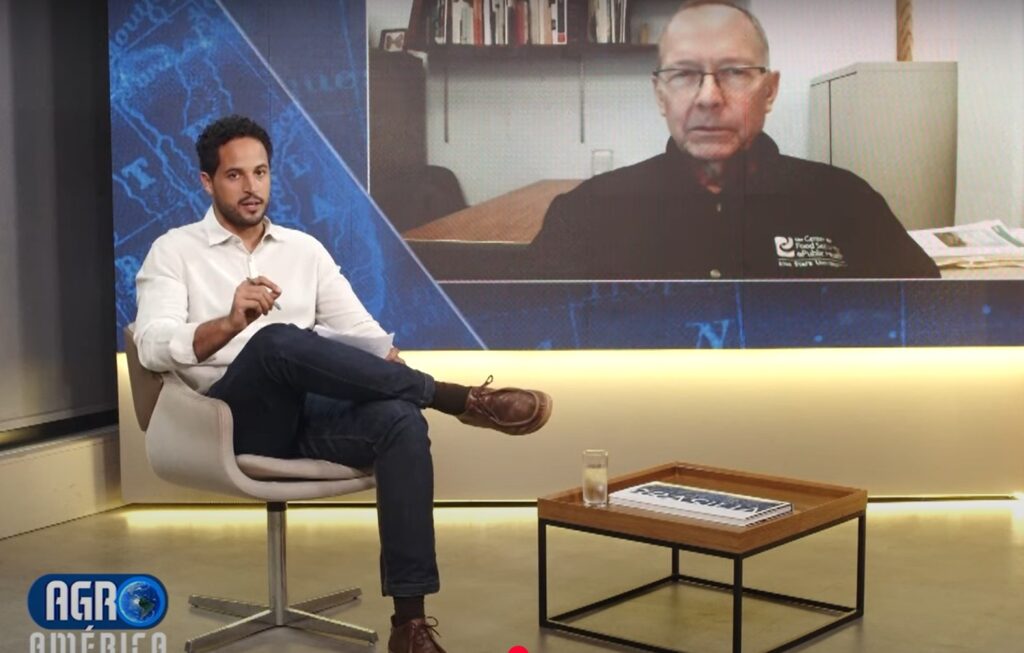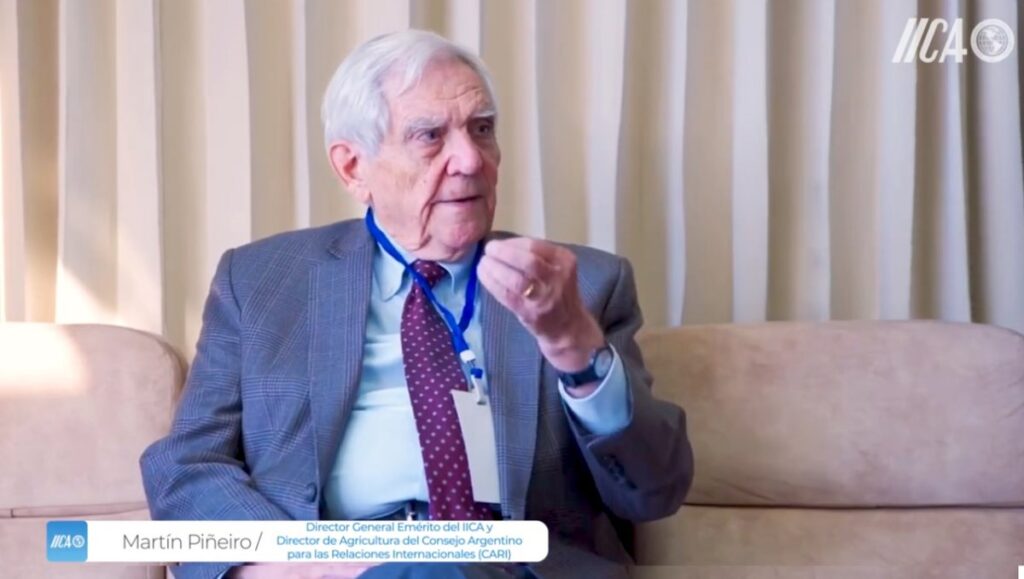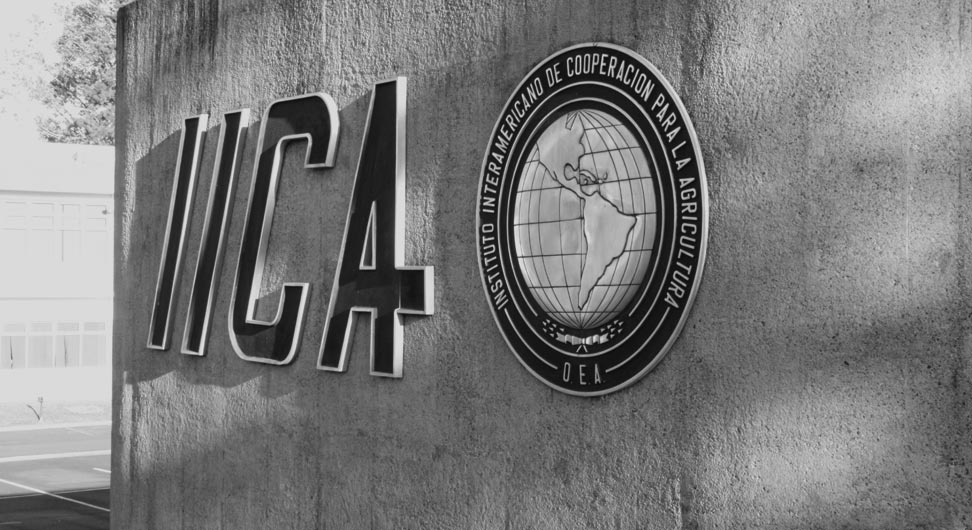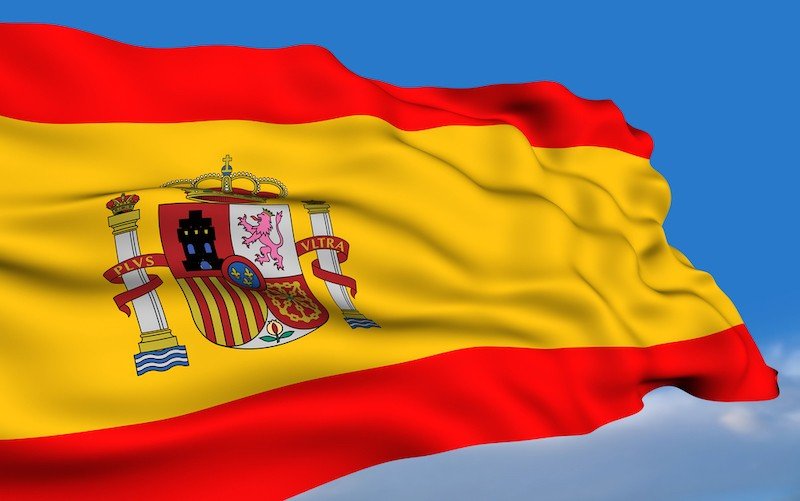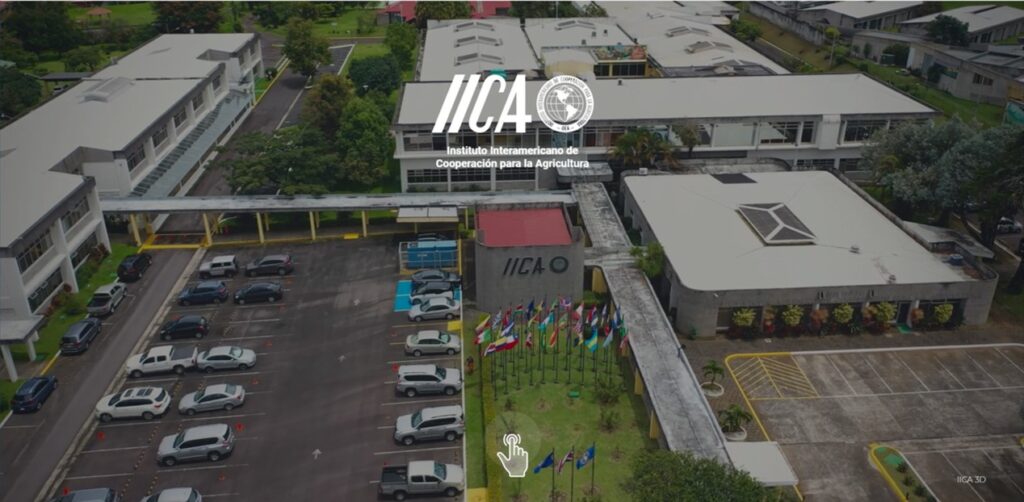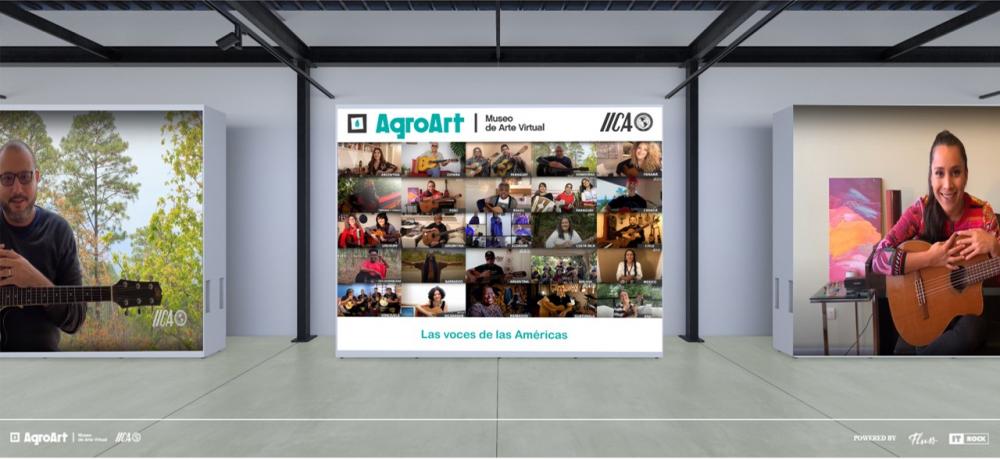Un seminario web del IICA sobre conectividad en Brasil analizó las brechas de conectividad reveladas por estudios recientes. En el país sudamericano, internet llega a la mitad de la población rural. Una nueva legislación impulsará inversiones.
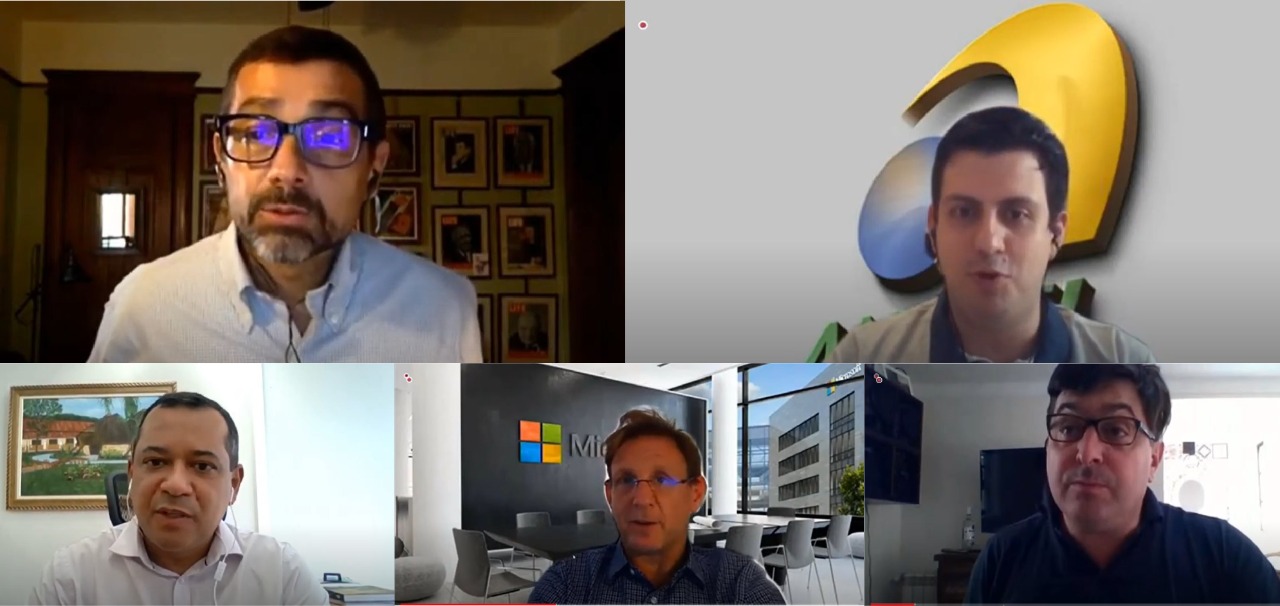
Brasilia, 17 de diciembre de 2020 (IICA). Brasil se enfrenta al gran desafío de conectar a la mitad de la población rural y mejorar la calidad de internet de la otra mitad. Para esta misión, las políticas públicas orientadas a la expansión de internet en la ruralidad deben considerar la diversidad y las necesidades específicas de las poblaciones que viven en el campo.
Esos fueron algunos de los consensos de los expertos que participaron en el seminario web “Conectividad Rural en Brasil: el desafío de la inclusión – enfoques y perspectivas“, promovido por el Instituto Interamericano de Cooperación para la Agricultura (IICA), en el que participaron altos funcionarios del Ministerio de Agricultura, Pecuaria y Abastecimiento (MAPA), de la reguladora Agencia Nacional de Telecomunicaciones (ANATEL), del Banco Interamericano de Desarrollo y de Microsoft.
Aproximadamente la mitad de la población rural brasileña no tiene acceso a internet de calidad, según los datos presentados en el seminario.
Para el representante del IICA en Brasil, Gabriel Delgado, la disponibilidad de internet se ha convertido en una medida de ocupación territorial. “Como en otros momentos de la historia, los trenes, autopistas y caminos fueron temas muy importantes para el desarrollo, el tema ahora es internet”, destacó Delgado al inaugurar el encuentro, moderado por el periodista Daniel Rittner, columnista de Valor Econômico.
Según datos del estudio “Conectividad rural en América Latina y el Caribe: un puente hacia el desarrollo sostenible en tiempos de pandemia”, elaborado a través de una alianza entre el IICA, el Banco Interamericano de Desarrollo (BID) y Microsoft, en Brasil el 47% de la población rural tiene acceso a una conectividad significativa, es decir, con señal de calidad y equipamiento adecuado.
Otro diagnóstico, centrado en Brasil, realizado por el Grupo de Políticas Públicas de la Escuela Superior de Agricultura “Luiz de Queiroz” (Esalq) y la Universidad de São Paulo (USP), basado en el alcance de la propagación física de la onda de señal en el territorio, revela que el 46% de los pequeños establecimientos agrícolas tienen señal 3G y el 39% 4G.
En el caso de los emprendimientos medianos, la señal para 3G y 4G alcanzó el 44% y 34% respectivamente y en el caso de las grandes empresas, el 39% y 27%. Sin embargo, la señal es de calidad media.
“En general, en América Latina y el Caribe, la población urbana tiene el doble de acceso a Internet de calidad que la población rural. En Brasil, el 53% de la población carece de acceso a una conectividad significativa y la brecha en la calidad de la conectividad entre la población urbana y rural es del 31%”, detalló el economista del IICA Joaquín Arias, quien, junto con la especialista Sandra Ziegler coordinó el estudio IICA-BID-Microsoft con enfoque regional, que reúne información de 24 países de América Latina y el Caribe divididos en tres grupos: calidad de señal alta, media y baja.
Brasil se encuentra en el primer grupo, junto a Bahamas, Barbados, Chile, Colombia, Costa Rica y Panamá. Al considerar los 24 países en los que se enfocó el levantamiento, el 63% de la población rural no tiene acceso a una conectividad significativa con los estándares mínimos necesarios. Cuando se excluye a Brasil de la muestra, el porcentaje pasa al 75%, debido al peso de la población del país y por estar en una posición relativa mejor que parte de los demás países.
Según el agrónomo Alberto Barreiro, Coordinador de Análisis Territorial del Grupo de Políticas Públicas (ESALQ / USP), la cantidad de personas conectadas en el campo en Brasil es mayor que la declarada en el último censo agropecuario (2017), cuando el 28% de los establecimientos dijeron tener acceso a internet.
“El hecho de que la persona tenga acceso no significa que la persona sepa cómo usar internet o qué es internet. Es posible que no tenga un dispositivo o simplemente use su teléfono celular solo para hablar”, explicó Barreto, quien coordina una encuesta de conectividad rural en Brasil como parte de un proyecto de cooperación técnica con el MAPA y el IICA para asistir al gobierno federal en la toma de decisiones de políticas públicas para el sector.
Contraste
Según Barreto, hay dos dinámicas principales de la producción agrícola en Brasil: las de las empresas agrícolas de bajos ingresos y las insertadas en el mercado global. “De los cinco millones de establecimientos agrícolas del país, tres millones, es decir, el 60%, tienden a perder productividad. Son los que tienen ingresos inferiores a 25 mil reales anuales. En el otro extremo, el 1% forma parte de la dinámica global, con ganancias de productividad, aumento de escala e incorporación de la última tecnología”, comparó.
“La gran palanca para optimizar los sistemas de producción y la productividad será a través de las ciencias digitales”, dijo Cleber Soares, director de Innovación del MAPA. Según él, fue con el uso de tecnologías que Brasil aumentó la producción promedio de 1.500 a 1.800 y de 3.000 a 3.500 kilogramos por hectárea durante un período de aproximadamente 30 años.
“Las ciencias que darán ganancias a la productividad serán digitales y hay que mirar una segunda camada, que son las plataformas, en una mirada integradora, y otra camada, que es la prestación de servicios por medios digitales”, agregó Soares. Según él, actualmente solo el 23% del espacio agrícola brasileño tiene algún nivel de conectividad.
El funcionario explicó que el gobierno brasileño considera cuatro modelos de conexión para el campo. El primero son las telecomunicaciones a través de 2G, 3G, 4G y 5G, el último luego de la subasta del nuevo espectro de radiofrecuencia que se realizará el próximo año, según la Agencia Nacional de Telecomunicaciones (Anatel). Las otras modalidades son la conectividad vía satélite; fibras ópticas en localizaciones rurales específicas y bandas analógicas, es decir, la llamada WEB TV, aún en fase de regulación.
“En noviembre, visité un proyecto del gobierno ecuatoriano con WEB TV Space de Microsoft, que trajo conectividad desde una escuela en un área remota de Ecuador. Los estudiantes pudieron conectarse con otra escuela en Perú, abriendo la oportunidad de compartir experiencias y culturas y, para algunos, tener una experiencia de conectividad por primera vez. Fue muy emocionante”, contó Luciano Braverman, Director de Educación de Microsoft en Latinoamérica, para quien “no hay duda de que una población conectada tiene más oportunidades de trabajar, generar ingresos, tener conocimientos y acceder a servicios como la telemedicina y la educación a distancia, nueva realidad que la pandemia se ha acelerado”.
Recursos y legislación, capacitación y heterogeneidad
El Gerente de Regulación de Anatel, Felipe Roberto Lima, explicó que existe una frontera de atractivo económico para atender a poblaciones poco densas, como las de zonas rurales. “El Estado necesita garantizar las fuentes de financiamiento para que los agentes privados realicen inversiones. En noviembre se aprobó el Proyecto de Ley 172 que cambia la estructura del Fondo de Financiamiento de Telecomunicaciones”, dijo.
Recordó que, hasta entonces, este fondo solo podía ser utilizado para proyectos de expansión de línea fija, enfocados en el antiguo marco legal, de los años 90, que perseguía la universalización de este servicio. ´
“El fondo ahora se puede utilizar para cualquier proyecto para ampliar el acceso a Internet. El fondo tiene recursos acumulados por los proveedores que cobran un porcentaje de sus ganancias”, explicó. Las nuevas reglas esperan la sanción presidencial.
Según Lima, otros recursos disponibles son los avisos por radiofrecuencia, cuyo modelo establece una contraparte a los ganadores de las subastas, y términos de ajuste de conducta y conversión de multas.
El Banco Interamericano de Desarrollo (BID) ha estado analizando cómo los países de la región han manejado la conexión durante la pandemia.
Según Marcelo Cabrol, gerente del Área Social del BID, servicios como la telemedicina y la educación no han llegado al sector rural.
“Los contratos sociales han cambiado, así que tenemos que pensar en software y plataformas adecuadas para el mundo rural y recursos humanos para empoderar a las personas”, dijo.
“Cuando hablamos del mundo rural, no podemos pensar en un mundo homogéneo, ya que hay poblaciones indígenas y debemos trabajar con ellas considerando sus características. Las mujeres rurales tienen necesidades distintas a las urbanas y, aunque están en el campo, los jóvenes que viven allí son parte de una generación digital y necesitan poder disfrutar de todo lo que está pasando”, reflexionó.
Para Cabrol, esta diversidad enseña que los productos digitales desarrollados para la ruralidad no pueden ser iguales y deben considerar esta heterogeneidad.
“La expansión de la tecnología no enseña a la gente cómo usar la tecnología”, agregó por su parte Barreto, para quien las políticas de ruralidad, incluidas las digitales, deben considerar el trípode en el que se asienta este sector: cooperativismo, asistencia técnica y crédito rural.
Más información:
Gerencia de Comunicación Institucional
